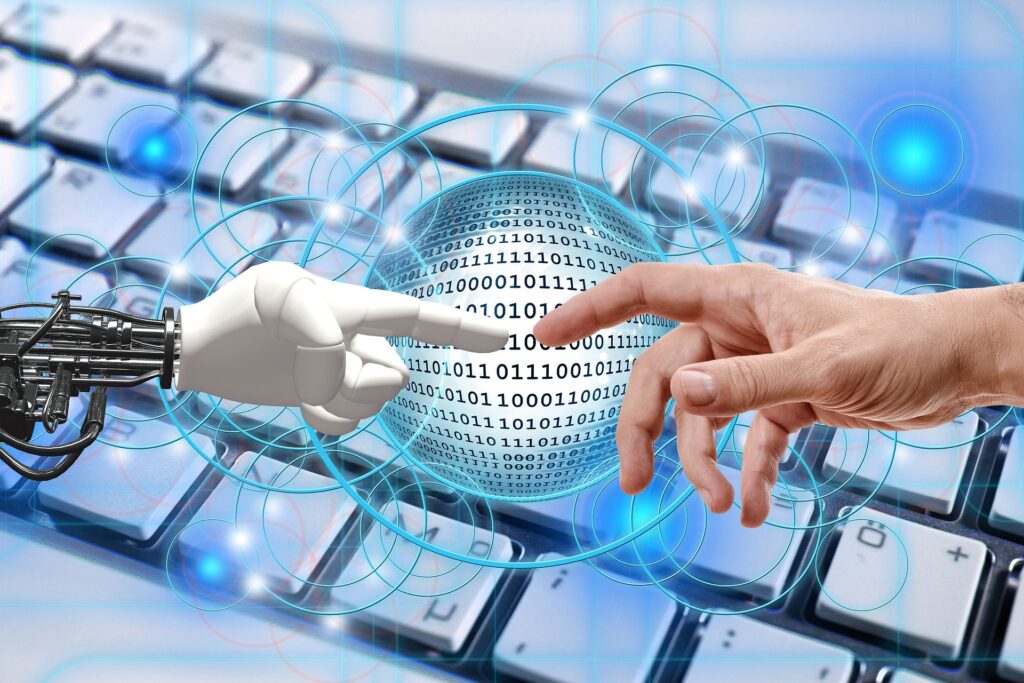In the ever-evolving landscape of innovation and intellectual property, patents play a pivotal role in protecting the fruits of human ingenuity. These legal documents not only safeguard the rights of inventors and creators but also incentivize further research and development. Yet, the process of obtaining a patent is no walk in the park. Patent examiners, the gatekeepers of this intellectual property realm, shoulder the immense responsibility of evaluating patent applications to ensure they meet the stringent criteria for granting a patent.
The traditional patent examination process is a labor-intensive and time-consuming endeavor fraught with challenges. Patent examiners must sift through mountains of technical documentation, navigate complex legal nuances, and make crucial decisions that can impact the trajectory of innovation. Moreover, the subjectivity inherent in human judgment often leads to inconsistencies and delays in the patent approval process.
However, in recent years, a transformative force has emerged in the realm of patent examination—artificial intelligence (AI) assistance and automation. AI is reshaping the way patent applications are reviewed and assessed, promising increased efficiency, accuracy, and consistency in the patent examination process.
The technological evolution is not without its share of concerns and complexities. We will navigate the ethical and legal considerations surrounding AI in patent examination, emphasizing the importance of transparency and fairness. We will also examine the challenges and limitations that must be addressed to fully harness the potential of AI in this domain.

The Traditional Patent Examination Process
The traditional patent examination process is a multi-step journey that begins when an inventor or applicant submits a patent application to the relevant patent office. This process is a critical juncture where a patent examiner steps in to scrutinize the application meticulously.
Challenges in Traditional Examination
The traditional patent examination process is fraught with challenges that patent examiners face. The sheer volume of prior art and technical documentation can be overwhelming. Examiners must meticulously analyze these documents to determine the patentability of an invention.
The patent system is often under pressure to process applications promptly. However, the in-depth analysis required can be time-consuming. The interpretation of prior art and patent law can be subjective, leading to inconsistencies in patent decisions. Different examiners might reach different conclusions on similar cases.
The Need for Innovation
Given these challenges, there’s a pressing need for innovation in patent examination. The traditional process, while effective, can be improved to better serve inventors, applicants, and the innovation ecosystem as a whole. This is where AI-assistance and automation step in as game-changers.
AI can help streamline the examination process, improve the quality of decisions, and ensure that patents are granted fairly and efficiently. In the next section, we’ll explore how AI is making significant strides in this domain.
The Emergence of AI in Patent Examination
A New Era in Intellectual Property
The emergence of AI in patent examination marks a new era in the world of intellectual property. As technology advances, so does the sophistication of AI systems, enabling them to take on complex tasks that were once the domain of human experts. This evolution is reshaping the patent examination landscape in profound ways.
Evolution of AI-Powered Tools
AI-powered tools for patent examination have come a long way, and they continue to evolve rapidly. These tools leverage advanced machine learning algorithms, natural language processing, and data analysis techniques to augment the work of patent examiners. Here’s a closer look at their evolution.
1. Prior Art Search and Analysis:
AI algorithms can sift through vast databases of patents and technical documents in seconds, identifying relevant prior art with a high degree of accuracy. Natural language processing (NLP) allows AI to understand and contextualize the text within patent documents, making it easier to identify similarities and differences. Machine learning models can predict the relevance of prior art, helping examiners prioritize their efforts.
2. Patent Classification and Categorization:
AI can automatically classify patents into specific categories based on their content, making it easier to manage and search for patents in specific technology areas. This categorization helps examiners quickly locate relevant prior art and determine the patentability of inventions.
3. Predictive Analytics and Decision Support:
AI-driven predictive analytics provide examiners with insights into the likely outcomes of patent applications. Decision support systems use historical data to recommend whether a patent should be granted or rejected, assisting examiners in making more informed decisions.
Benefits of AI-Assisted Patent Examination
The integration of AI into patent examination offers several compelling benefits:
Increased Efficiency: AI can perform tasks that would take human examiners hours or even days in a matter of seconds or minutes. This acceleration of the examination process reduces backlog and allows inventors to receive timely decisions on their applications.
Improved Accuracy: AI systems are exceptionally accurate in identifying relevant prior art, reducing the likelihood of granting patents for non-novel inventions. The reduction in human error ensures a higher quality of examination.
Enhanced Consistency: AI provides a consistent and objective approach to prior art search and analysis, reducing the subjectivity often associated with human examiners. This consistency helps ensure fairness in patent decisions.
AI-assisted patent examination is not just a theoretical concept; it’s making a tangible impact in the real world. In the next section, we’ll explore some of the prominent AI-assistance tools and platforms that are transforming patent examination.
Addressing Ethical and Legal Concerns
While the advent of AI in patent examination promises numerous benefits, it also raises important ethical and legal questions that must be carefully addressed. These concerns revolve around issues such as fairness, transparency, and compliance with intellectual property laws and regulations.
Potential Biases in AI-Assisted Examination
One of the foremost concerns in AI-assisted patent examination is the potential for biases. AI systems learn from historical data, which may contain biases inherent in the patent examination process. For example:
If past patent decisions have been biased in favor of certain technology fields or applicants, AI systems trained on this data might perpetuate such biases. Biases can also emerge from the data used for training AI models. If the data is not representative of the full spectrum of innovation, the AI may favor certain types of inventions.
To mitigate biases, it’s crucial to continuously monitor AI-assisted examination and employ techniques to detect and correct biases when they arise.
Ensuring Transparency and Fairness
Transparency is a cornerstone of ethical AI-assisted patent examination. Patent applicants and the public should have a clear understanding of how AI systems contribute to the examination process.
Users should know how AI systems arrive at their conclusions. Transparency mechanisms like explainability tools can provide insights into AI decision-making. AI systems should be designed to provide equitable outcomes across different technology domains and applicant profiles.
This requires ongoing evaluation and adjustment of AI models. Ensuring that AI systems are transparent and fair is essential for building trust in their use within the patent system.
Compliance with Intellectual Property Laws and Regulations
AI-assisted patent examination must align with existing intellectual property laws and regulations.
AI systems should accurately assess whether an invention meets the criteria for patent eligibility, which can vary by jurisdiction. Handling and processing of patent data, which may contain sensitive information, must comply with data protection regulations. Ethical guidelines and legal frameworks should govern the use of AI in patent examination to ensure that it serves the public interest.
To navigate these complexities, patent offices and organizations developing AI-assistance tools must work in collaboration with legal experts and policymakers.
Protecting Sensitive and Confidential Information
AI systems often require access to vast amounts of data, some of which may be sensitive or confidential. Protecting this information is paramount. Robust data security measures must be in place to safeguard patent data from unauthorized access or breaches. Organizations using AI in patent examination should establish confidentiality agreements to protect the information they handle.
Protecting sensitive data is not only a legal requirement but also an ethical obligation to patent applicants and inventors. Addressing these ethical and legal concerns is essential to ensure that AI-assisted patent examination is conducted with integrity, fairness, and transparency. It also paves the way for the responsible integration of AI into the patent system.
Challenges and Limitations of AI in Patent Examination
While AI-assisted patent examination holds immense promise, it is not without its challenges and limitations. Understanding these constraints is essential to navigate the path toward effective integration of AI in the patent system.
1. Technical Challenges
AI systems rely heavily on data. The quality, quantity, and availability of patent data can vary significantly across different technology domains and jurisdictions. In some cases, data may be incomplete or outdated, which can impact the accuracy of AI models.
AI models, especially deep learning algorithms, can be complex and difficult to interpret. Patent examiners may struggle to understand how AI systems arrive at their decisions. Explainability tools are still evolving to provide more transparent insights into AI decision-making.
2. Human-Machine Collaboration
Patent examiners, who have traditionally been responsible for the examination process, may resist the integration of AI. There could be concerns about the impact on job roles and job security. Overcoming resistance and ensuring a smooth transition to AI-assisted examination is a significant challenge.
AI should be seen as a tool to augment the capabilities of patent examiners, not as a replacement for human expertise. Striking the right balance between human and machine involvement is a nuanced challenge.

3. Cost Considerations and Resource Allocation
Implementing AI-assistance systems requires an initial investment in technology, training, and infrastructure. For smaller patent offices or organizations, this can be a financial hurdle. AI systems require ongoing maintenance, updates, and continuous monitoring to ensure they remain effective and compliant with changing regulations.
Allocating resources for the development, deployment, and management of AI-assistance tools can be a complex task that requires careful planning.
Addressing these challenges is crucial for the successful integration of AI in patent examination. Overcoming these limitations will not only improve the efficiency of patent examination but also enhance the quality of patent decisions.
The Future of Patent Examiner AI-Assistance
The integration of AI into patent examination has already begun to reshape the landscape, but the journey is far from over. As technology continues to advance, so too will the capabilities and impact of AI in this field. Let’s look into what the future holds:
1. Predictions for the Evolution of AI in Patent Examination
Future AI systems will feature even more advanced NLP capabilities, enabling them to understand and analyze patent documents in multiple languages with unparalleled accuracy. Predictive analytics models will become increasingly sophisticated, providing patent examiners with insights into potential patent outcomes, litigation risks, and market trends. AI systems will incorporate visual recognition technologies to analyze patent drawings and diagrams, further streamlining the examination process for visual inventions.
2. Potential Advancements in AI Technology
The advent of quantum computing could revolutionize patent examination by drastically reducing the time required for complex calculations and analysis. Advancements in explainable AI will lead to more transparent decision-making processes, addressing concerns about the “black box” nature of AI systems.
RPA will automate routine tasks within patent examination, freeing up patent examiners to focus on complex analysis and decision-making.
3. Implications for the Role of Patent Examiners
As AI-assistance tools handle more routine tasks, patent examiners will evolve into knowledge workers who specialize in complex analysis, legal interpretation, and decision-making. Patent examiners will need ongoing training to keep pace with evolving AI technologies and ensure they can effectively collaborate with AI systems.
4. The Global Landscape of AI Adoption in Patent Offices
Patent offices around the world will collaborate on the development and adoption of AI-assistance tools to create a global framework for patent examination. Widespread AI adoption will enhance global access to patent information, promoting equity in innovation and enabling inventors from diverse backgrounds to participate.
5. Ethical and Legal Frameworks
Ethical guidelines and regulations will evolve to address emerging challenges, such as AI-generated inventions and cross-border patent examination. Stricter data protection and security measures will be put in place to safeguard patent data, ensuring its integrity and confidentiality.
The future of patent examination with AI-assistance is a dynamic and promising one. It offers the potential to accelerate innovation, reduce backlogs, and improve the quality and fairness of patent decisions. However, achieving this future requires ongoing collaboration, innovation, and a commitment to addressing ethical, legal, and technical challenges.

